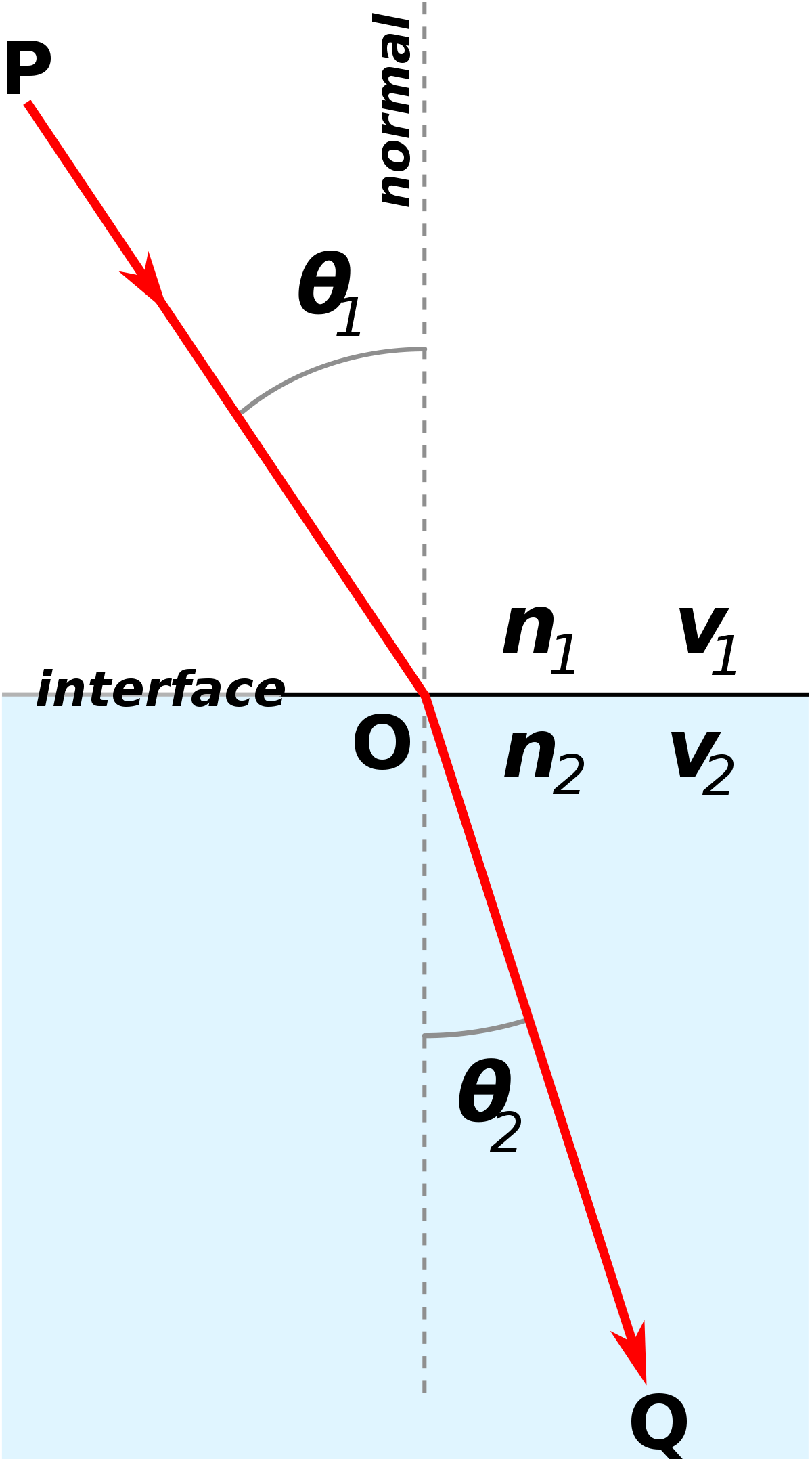I'm planning a nano cube (18" acrylic) and was doing some doodling thinking about light placement. I have a kessil A360x I plan to use and was debating the value of using a narrow angle reflector and positioning the light further up away from the surface of the tank to reduce spillover and get a high par spot where I could potentially try introducing SPS in the future if the fancy struck me (which I'm guessing it almost certainly will at some point).
This site lists the refractive index of acrylic in the blue range as n= ~1.5:
which is only slightly lower than the typical range for glass (n=1.51 - 1.52).
So my back-of-the-envelope geometry gives the half angle of light coming out of the light as 60 degrees (since the full angle is ~120 degrees), passing through the air-water interface refracts that to ~ 40 degrees. Changing the perspective to the water/acrylic interface means that at the widest light would hit the surface at 50 degrees from the normal which is a decent bit less than the critical angle of 64 degrees for that interface, so most of the light would just pass out of the glass minus whatever surface reflection occurs.
Kessil offers a narrow angle reflector with a full angle of 55 degrees, refracting through the seawater to a half angle of 20 degrees, thus hitting the water acrylic surface at 70 degrees for the normal, now well above the critical angle.
I'd have to mount the light a fair bit higher to cover the whole tank effectively, but that + $30 for the reflector seems worth it for keeping more of the light inside the tank, the internal reflections should generate more even lighting from different angles, and there should be less annoying light spill out of the tank.
I can't be the first person to think down these lines, so can anyone point out any disadvantages of taking this approach that I may have missed? The main issue I can think of is that the internal reflection angle is quite shallow so most of that light would probably just hit the substrate? Also I guess this would create a halo effect where there's a band of extra light within a few inches of the perimeter of the tank's bottom.
This site lists the refractive index of acrylic in the blue range as n= ~1.5:
Refractive Index of Acrylic, Acrylate, Lucite, Perspex, Plexiglass for Thin Film Thickness Measurement
Affordable thin film thickness measurement systems from the world sales and technology leader.
www.filmetrics.com
which is only slightly lower than the typical range for glass (n=1.51 - 1.52).
So my back-of-the-envelope geometry gives the half angle of light coming out of the light as 60 degrees (since the full angle is ~120 degrees), passing through the air-water interface refracts that to ~ 40 degrees. Changing the perspective to the water/acrylic interface means that at the widest light would hit the surface at 50 degrees from the normal which is a decent bit less than the critical angle of 64 degrees for that interface, so most of the light would just pass out of the glass minus whatever surface reflection occurs.
Kessil offers a narrow angle reflector with a full angle of 55 degrees, refracting through the seawater to a half angle of 20 degrees, thus hitting the water acrylic surface at 70 degrees for the normal, now well above the critical angle.
I'd have to mount the light a fair bit higher to cover the whole tank effectively, but that + $30 for the reflector seems worth it for keeping more of the light inside the tank, the internal reflections should generate more even lighting from different angles, and there should be less annoying light spill out of the tank.
I can't be the first person to think down these lines, so can anyone point out any disadvantages of taking this approach that I may have missed? The main issue I can think of is that the internal reflection angle is quite shallow so most of that light would probably just hit the substrate? Also I guess this would create a halo effect where there's a band of extra light within a few inches of the perimeter of the tank's bottom.
















